„We make […] in orchards and gardens, trees and flowers to come earlier or later than their seasons; and to come up and bear more speedily than by their natural course they do. We make them also by art greater much than their nature; and their fruit greater and sweeter and of differing taste, smell, colour and figure, from their nature. […] We have also means to make divers plants rise by mixtures of earths without seeds; and likewise to make one tree or plant turn into another.”
Francis Bacon, New Atlantis, 1623
Hello to all participants,
My main goal when creating images of NYC of 2040 is to create attractive and imagination arousing vision.
At the same time I asked myself: ‘what can I offer to people from the future to make their lives better, considering the fact that man is moving further away from the nature he comes from, being in conflict with her, occupying larger and larger areas for development and arable fields. Currently, cultivated fields occupy an area the size of South America. Food is often transported to consumers from thousands of kilometers away, generating large amounts of CO2.
What is the solution to make life of citizens better and reduce the ecological footprint of human activity?
The answer can be network of vertical farms that refers to the concept of agrourbanism (including the Garden City of Ebenezer Howard), whose main postulate was to bring together the natural and urban environment in order to create an eco-city. The project assumes creating a network of farms producing food on the existing urban green areas as well as degraded.
Designed production facilities are the basic source of supply of agricultural products. We already know the most important technologies for the success of this vision. We know the hydroponic and aeroponic method needed to grow plants in multi-storey structures. According to estimates, one unit of internal surface supported by appropriate technologies is able to produce as much food as 10-20 outdoor units cultivated in a traditional way. In addition to economic and pro-environmental functions, agritecture is an undeniable social value. Public gardens will encourage the creation of local communities with strong ties. Positive reorganization of social life will help to unlock the potential of the inhabitants. The level of education will increase, and consumers will turn into co-creators.
I wanted my buildings to stand out in the city panorama. I think I achieved it 😉 Here are some view proposals. Still trying to choose best 3 of them.












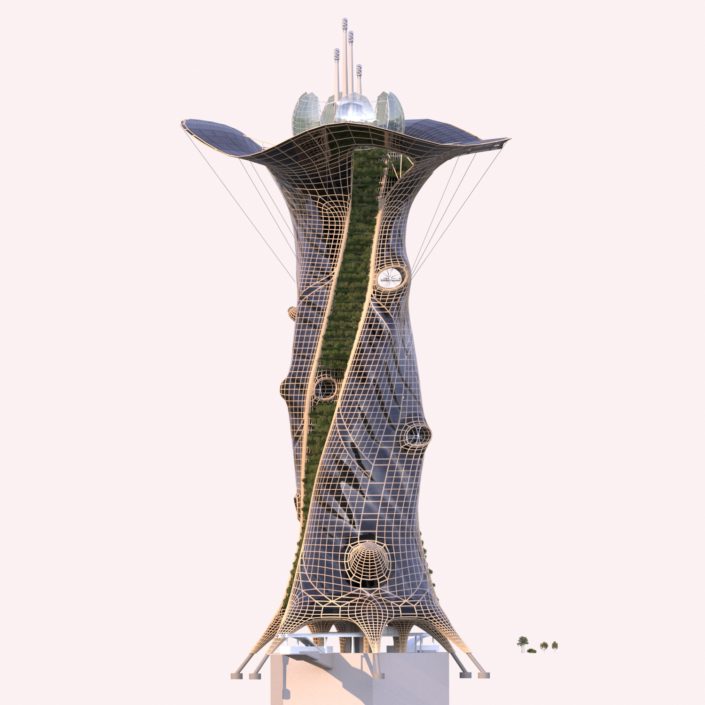


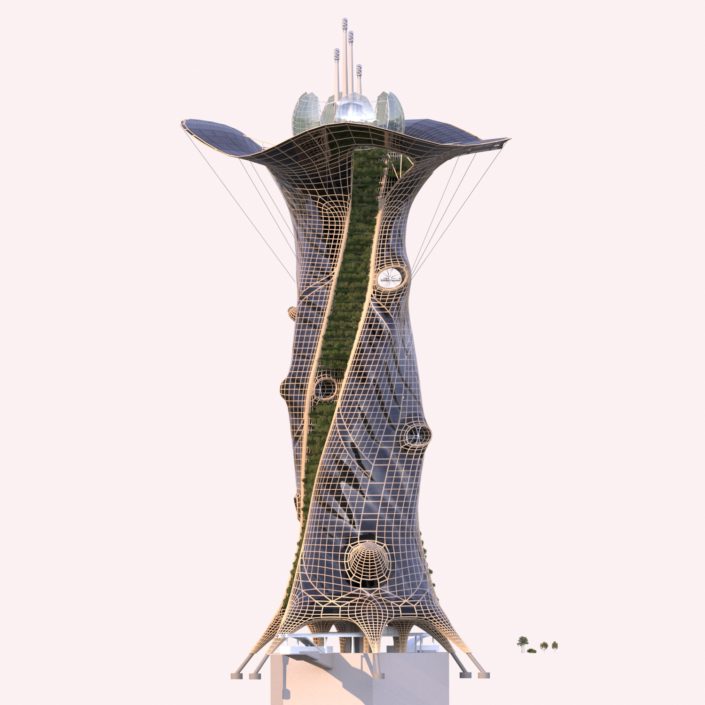
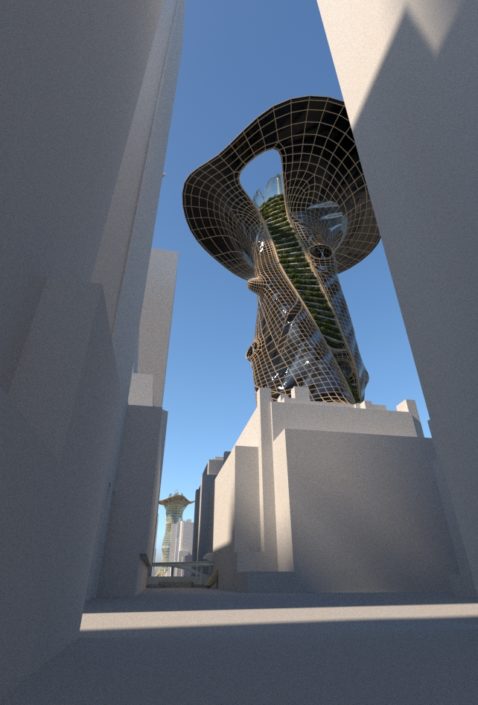
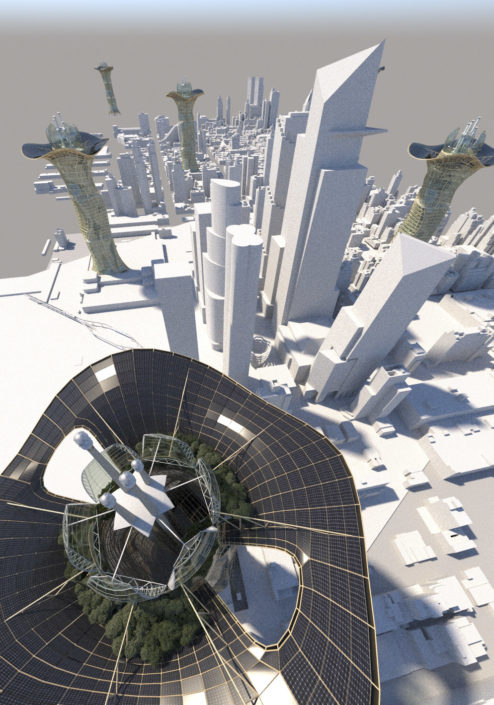
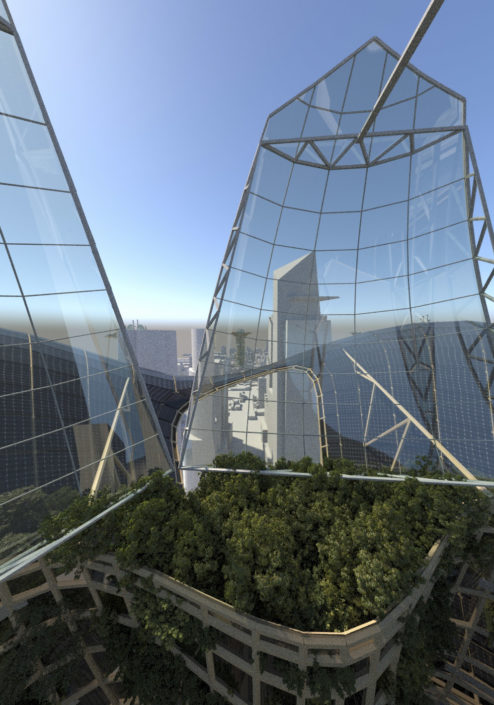
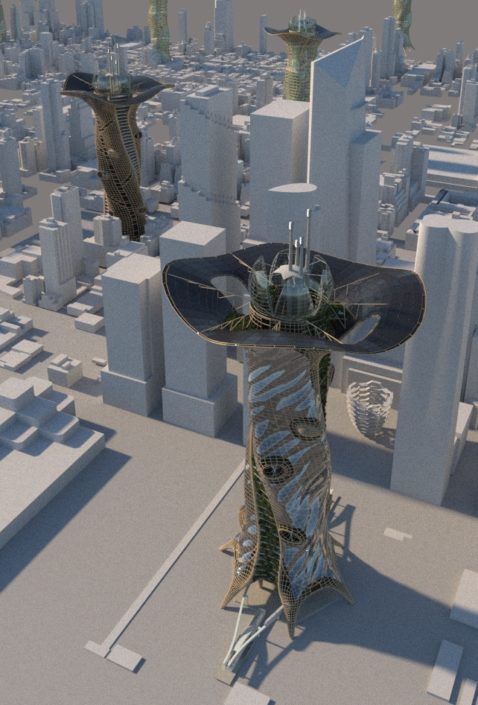



Start the discussion at talk.ronenbekerman.com